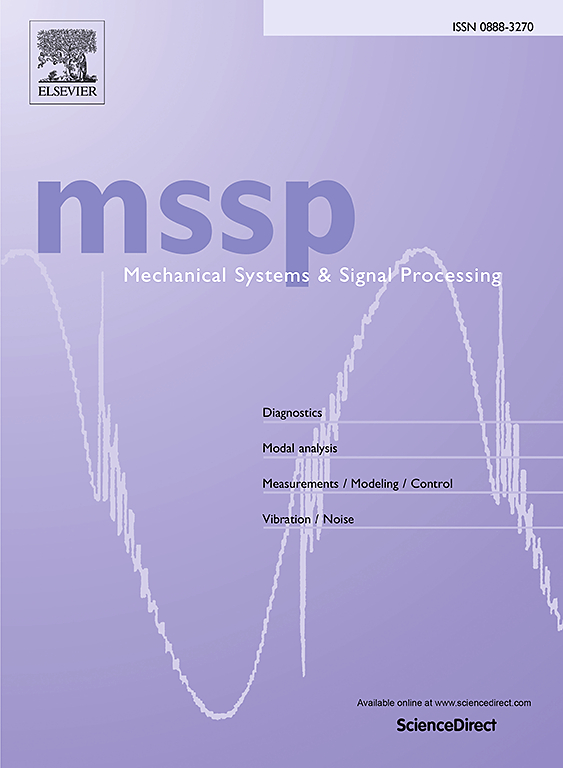Study on effect of shaft asymmetry on the dynamic response of the rotor-bearing system
IF 7.9
1区 工程技术
Q1 ENGINEERING, MECHANICAL
引用次数: 0
Abstract
In this paper, the dynamic responses of a rotor-bearing system with an asymmetric shaft are studied, focusing on the effect of the shaft asymmetry on the dynamic response of the rotor-bearing system. The asymmetric shaft is modeled considering shear effect based on Timoshenko beam theory. Both one-sided and two-sided cuts are considered in the cross-section of the asymmetric shaft. Various positions and lengths of the cuts along the shaft are also studied. A sliding bearing with cavitation boundary condition is adopted and the nonlinear oil film forces are accounted for in the rotor-bearing system. The eccentricity and the frequency difference of the asymmetric shaft have been investigated by numerical modeling and experimental validation. Their crucial role in determining sub-critical vibration and the dynamic response of the rotor-bearing system is elucidated for the first time. Their effects on sub-critical vibration are investigated for five cases of the asymmetric shafts applied in engineering practice, including different cut types, depths, positions, and lengths. The potential of these two proposed structural parameters for applications in the dynamical analysis of other complex rotor-bearing systems is demonstrated accordingly. The numerical results are in good agreement with the experimental results. This study will contribute to damage identification and health monitoring of such rotor-bearing systems.
轴不对称对转子-轴承系统动力响应影响的研究
本文研究了具有非对称轴的转子-轴承系统的动力响应,重点研究了轴的非对称对转子-轴承系统动力响应的影响。基于Timoshenko梁理论建立了考虑剪切效应的非对称轴模型。在非对称轴的横截面中,考虑了单边和双面切割。还研究了沿轴切割的不同位置和长度。采用带空化边界条件的滑动轴承,考虑了转子-轴承系统的非线性油膜力。通过数值模拟和实验验证,研究了非对称轴的偏心和频差。首次阐明了它们在确定转子-轴承系统亚临界振动和动态响应中的重要作用。研究了不同切割方式、切割深度、切割位置和切割长度对非对称轴亚临界振动的影响。这两种结构参数在其他复杂转子-轴承系统动力学分析中的应用潜力也得到了相应的证明。数值计算结果与实验结果吻合较好。本研究将有助于此类转子-轴承系统的损伤识别和健康监测。
本文章由计算机程序翻译,如有差异,请以英文原文为准。
求助全文
约1分钟内获得全文
求助全文
来源期刊

Mechanical Systems and Signal Processing
工程技术-工程:机械
CiteScore
14.80
自引率
13.10%
发文量
1183
审稿时长
5.4 months
期刊介绍:
Journal Name: Mechanical Systems and Signal Processing (MSSP)
Interdisciplinary Focus:
Mechanical, Aerospace, and Civil Engineering
Purpose:Reporting scientific advancements of the highest quality
Arising from new techniques in sensing, instrumentation, signal processing, modelling, and control of dynamic systems
 求助内容:
求助内容: 应助结果提醒方式:
应助结果提醒方式:


